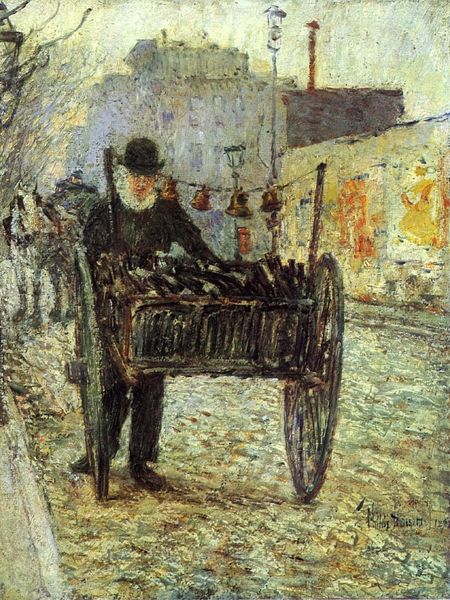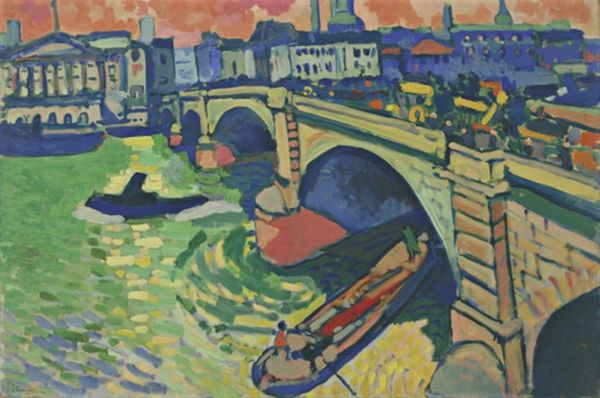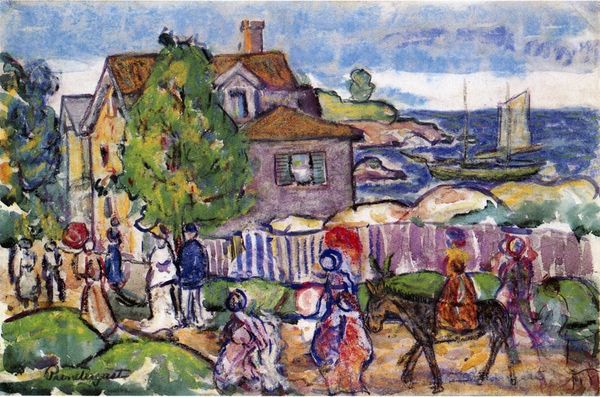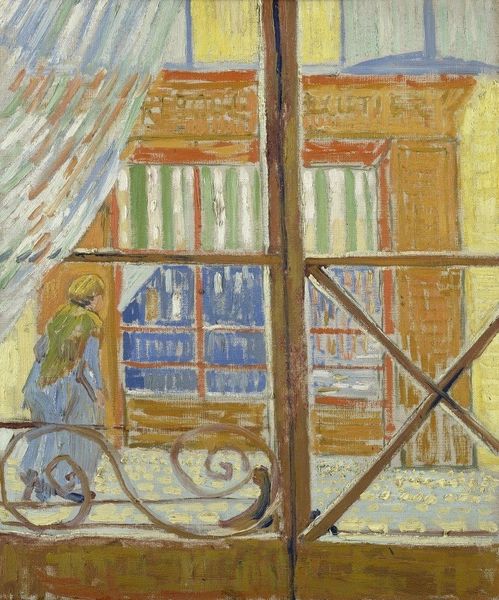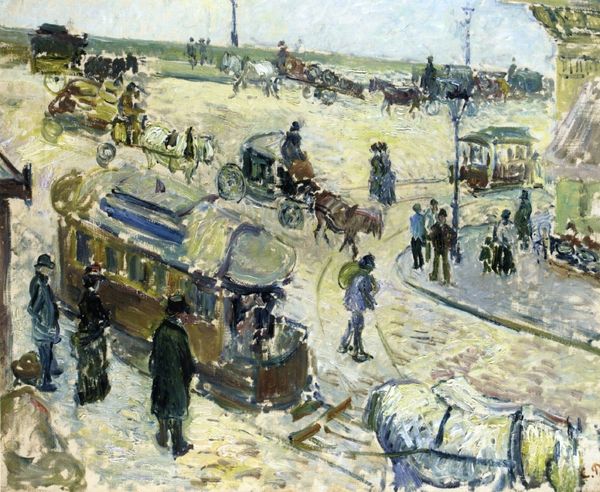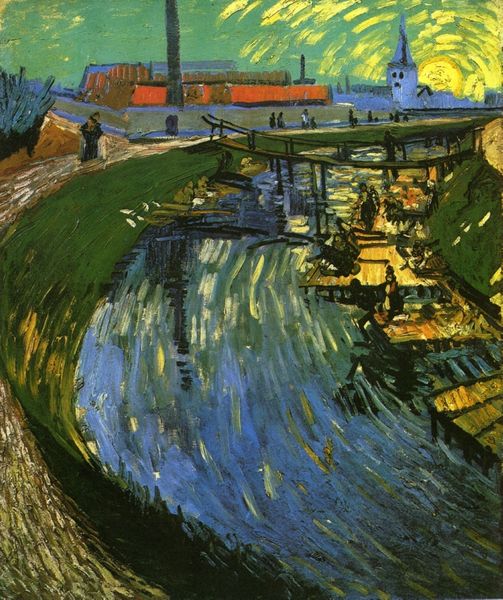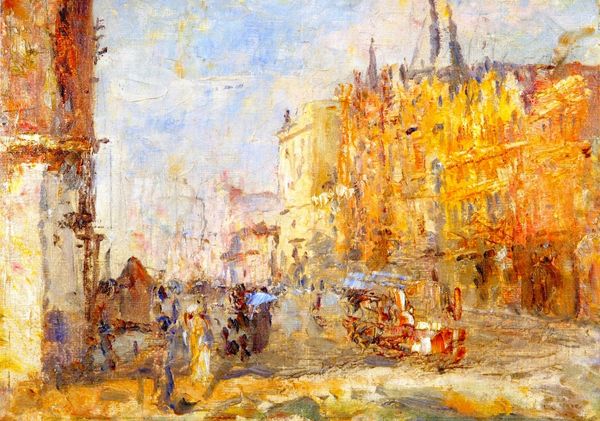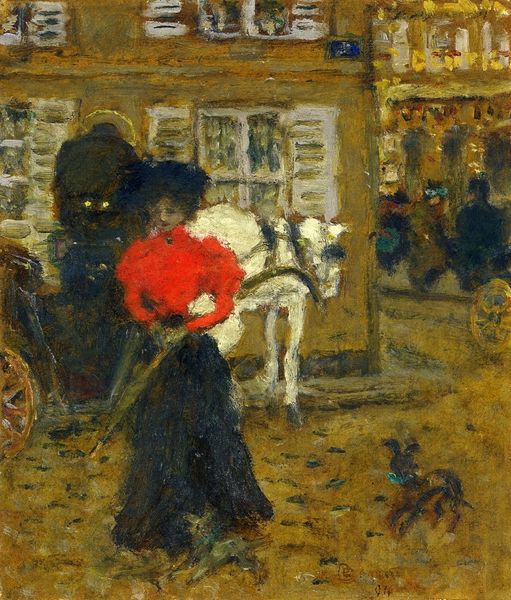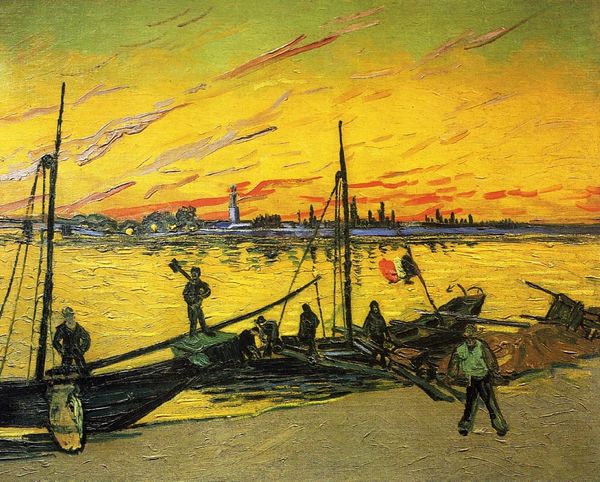
Dimensions: 72 x 92 cm
Copyright: Public domain
Editor: This is Vincent van Gogh's "The Tarascon Diligence" painted in 1888, using oil on canvas. There is a stillness and quietness that contrasts with the energy often associated with his work, don’t you think? What do you make of it? Curator: I see a visual memory of a bustling trade, distilled through Van Gogh’s very personal iconography. Notice how the stagecoach, ordinarily a symbol of transit and connection, is grounded, almost imprisoned, by the stark architecture. What feelings do those vibrant colors evoke in you, knowing the psychological turmoil he was experiencing at that time? Editor: The yellow feels oppressive, actually, and the ladder leaning against the wall gives the feeling of a vehicle in disrepair. But doesn't that also mirror Van Gogh's emotional state? Curator: Precisely. Consider the wheel, a near universal symbol of cyclical time, motion, and progress—here, stilled. Is Van Gogh implying an interruption in his own life’s journey through these symbols? Are the buildings in the background bearing down on him? Editor: I didn’t see that at first, but that makes perfect sense. He's not just painting a scene, but layering it with meaning. Curator: Visual language allows for emotional expression beyond the constraints of words. We often ascribe movement to the idea of leaving for Tarascon by diligence but we see here how he makes us sit in stillness. Do we see anticipation, the weight of expectation, or a symbol of society being in transit itself? Editor: I’ll never see a Van Gogh in the same way! It is so clever that he communicates feeling and state through symbol and visual language, beyond representation. Curator: Indeed, art provides keys, if we are attuned to its unique language, to interpret not just the seen, but also the felt.
Comments
No comments
Be the first to comment and join the conversation on the ultimate creative platform.
